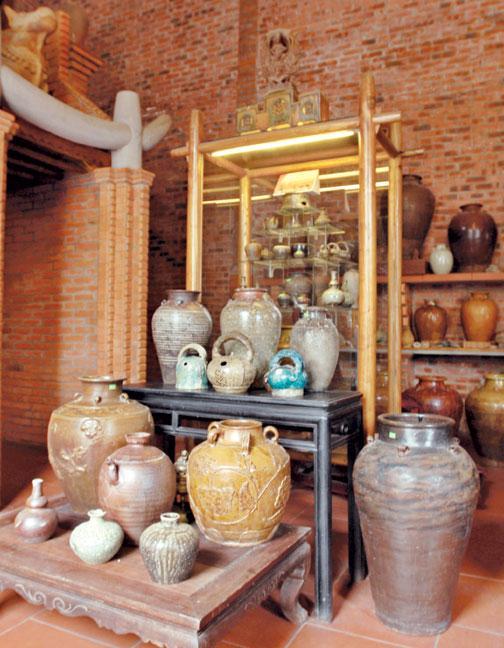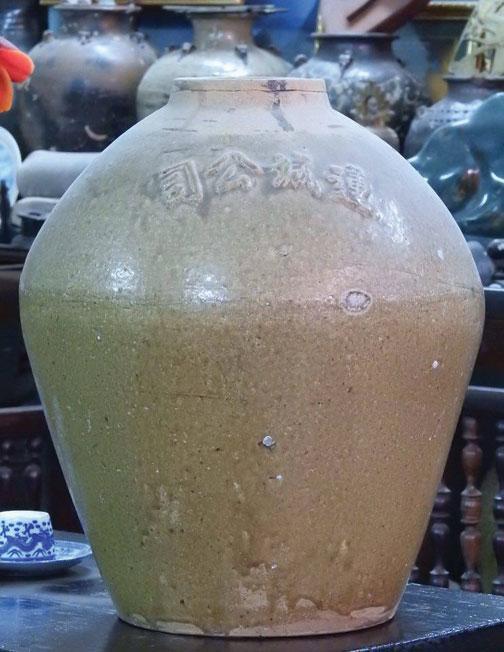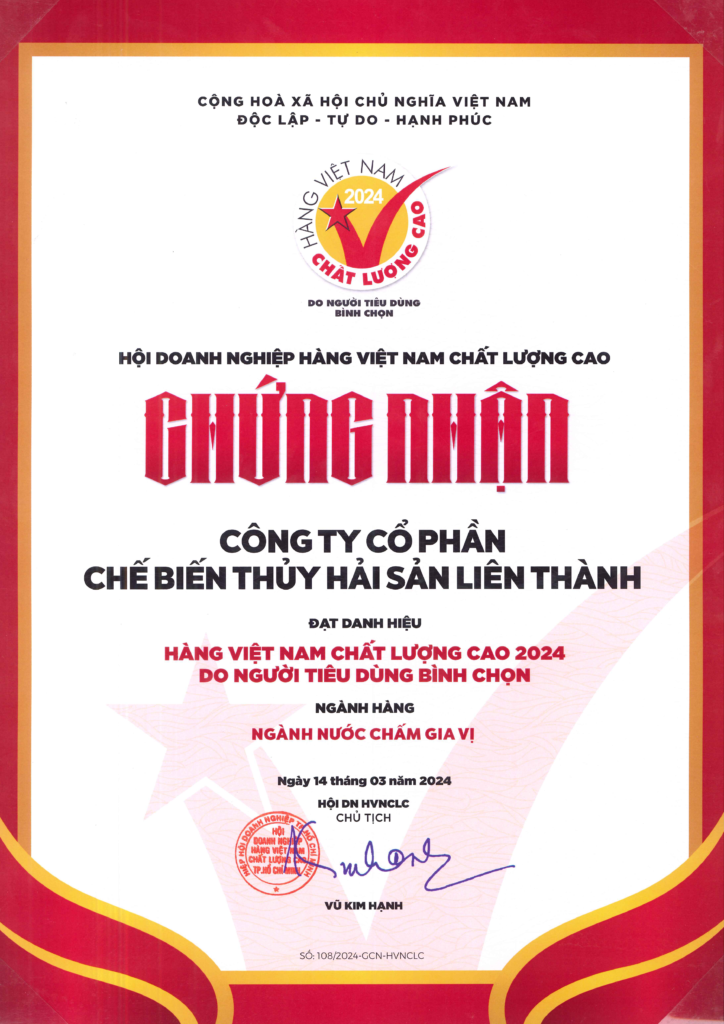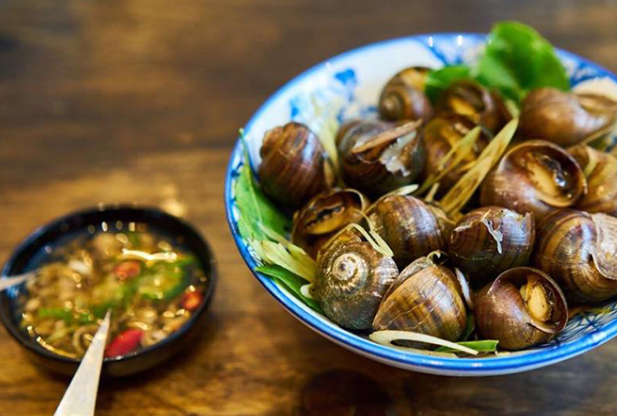Quang Duc Ceramics and Lien Thanh Company
 Quang Duc Ceramics and Lien Thanh Company
Quang Duc Ceramics and Lien Thanh Company
Quang Duc pottery is one of the typical cultural heritages of 400 years of Phu Yen, with a history of over 300 years. The artisans of Quang Duc Pottery Village have made significant contributions to the national brand, Red Elephant fish sauce of Lien Thanh Company, which has been present on the global market for almost a century.
In 1992, when I first started collecting and researching ancient Quang Duc ceramics, I was lucky enough to receive from collector Doan Phuoc Thuan an ancient Quang Duc ceramic jar with the entire iron brace around it intact. At that time, the antiquities world was only interested in Chinese porcelain, not many people were interested in Vietnamese ceramics. I didn’t have much information about the Quang Duc ceramic line, but seeing the 4 Chinese characters “Lien Thanh Cong Ty” (Lien Thanh Company) written in ink on a partly blank, unglazed piece of pottery, I suddenly thought, it must be a product from the village. What did this profession in Phu Yen have about Lien Thanh Company?
During his visit to Phu Yen, historian Duong Trung Quoc saw my collection of ancient Quang Duc ceramics and expressed particular interest in this ceramic jar. That is because he was very interested in national brands and his family was one of the shareholders of Lien Thanh Company.
BRIEF INFORMATION ABOUT LIEN THANH COMPANY
The six founders of Lien Thanh Company include Ho Ta Bang, Nguyen Trong Loi, Nguyen Quy Anh, Nguyen Hiet Chi, Tran Le Chat, and Ngo Van Nhuong. Founded in June 1906, this was an enterprise founded by patriotic scholars in Binh Thuan to respond to the Duy Tan movement. Lien Thanh Company once helped Nguyen Tat Thanh – Chairman Ho Chi Minh – in the process of moving from Phan Thiet to Saigon and boarding a ship abroad to find a way to save the country.
In the early twentieth century, Binh Thuan was a gathering place for many patriotic scholars. In 1905, Phan Chau Trinh, Huynh Thuc Khang, and Tran Quy Cap visited Binh Thuan and started the Duy Tan movement on their trip to the South. Three scholars, including Mr. Truong Gia Mo, met with Nguyen Trong Loi and Nguyen Quy Anh, sons of patriotic poet Nguyen Thong, to spread Duy Tan ideology. They established three organizations, namely Mr. Ngo Van Nhuong, Nguyen Hiet Chi, and Tran Le Chat, which were interconnected with political, cultural, and economic duties. These tasks corresponded to the platform’s three-point action of the Duy Tan movement at that time, which aimed to cultivate people’s wisdom, revive their spirit, and support their lives. These three organizations include Duc Thanh School: opens a school to teach children of patriots and poor workers with patriotic and progressive content, established in 1907. Lien Thanh Library: propagates books and newspapers with patriotic content, established in 1905. Lien Thanh Trading House: doing business to raise funds for operations, while creating jobs for people, was established in 1906.
According to historical documents, during that time, the industries of industry and commerce were mainly controlled by French capitalists and overseas Chinese. Therefore, Lien Thanh Trading House decided to focus on producing and trading fish sauce, which was a traditional craft of the Central region and had no competitors. In 1917, Lien Thanh Trading House relocated to Cho Lon and purchased a plot of land in Khanh Hoi to construct a fish sauce warehouse (currently located at No. 243 Ben Van Don, District 4, Lien Thanh’s headquarters). The 6 founders of the company made a wise decision by choosing a conventional profession. They had the foresight to invest in product quality right from the start. They established a chemistry laboratory, trained technicians, and collaborated with the Japanese company Kubota to obtain advanced machinery. Additionally, they focused on branding and ensuring that the Red Elephant fish sauce brand is not counterfeited.
In 1918, Lien Thanh experienced significant growth, participating in fairs in Hanoi and colonial exhibitions in Marseille, France, and earning a great reputation. Since then, Lien Thanh gradually expanded its distribution network in many central and southern provinces, throughout Cambodia and even Europe. Perhaps also during this time, Lien Thanh Company began ordering artisans from Quang Duc pottery village to create glazed ceramic jars to sell Red Elephant branded fish sauce for domestic and foreign consumption.
Historian Duong Trung Quoc states that trustworthiness, along with patriotism and national spirit, has been a key factor in enabling Vietnamese traders to become successful national capitalists. This allowed them to compete strongly with other overseas traders, such as the Chinese, Indians, and French, in a highly competitive business market of the time.

EXQUISITE QUANG DUC CERAMICS
From terracotta ceramics to glazed ceramics was a great step forward for Quang Duc ceramics in particular and Vietnamese ceramics in general. Because glazed ceramic has the advantage of not leaking when containing wine, fish sauce… Perhaps that’s why Quang Duc ceramics were highly sought after during its golden age, as missionaries traveled along the Ba River into the Central Highlands.
Along with the ceramic jar mentioned above, luckily I continued to collect a second jar with a beautiful Champa style with a round shape, brighter enamel color, and more sophisticated lines. In particular, this second jar also has 4 Chinese characters “Lien Thanh Company” but is crafted in an embossed and enameled way, without leaving the ceramic residue like the previous jar.
With the ancient Quang Duc ceramic line, perhaps thanks to its reputation for product quality, Lien Thanh Company chose it as a partner in making fish sauce jars in the context of the Central region, where many other ceramic lines also have products containing fish sauce. such as Chau O (Quang Ngai), Thap Nhan (Binh Dinh), Lu Cam (Khanh Hoa), Bau Truc (Ninh Thuan)…
The last artisans who knew about ancient Quang Duc ceramic-making techniques are no longer with us. Quang Duc Pottery Village on the Ngan Son River (Tuy An district) only has a few families working with modern materials and manufacturing techniques. However, the spread and influence of this unique ceramic line in many fields are still remarkable.
TRAN THANH HUNG
http://baophuyen.com.vn/93/144714/gom-quang-%C3%B0uc-va-lien-thanh-cong-ty.html






